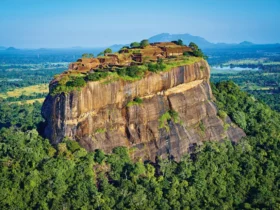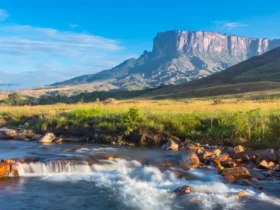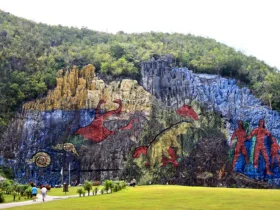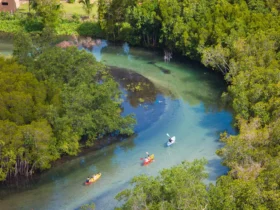Serengeti National Park is one of the most renowned wildlife reserves in Africa, located in northern Tanzania. It is part of the larger Serengeti ecosystem, which includes protected areas in Kenya as well.
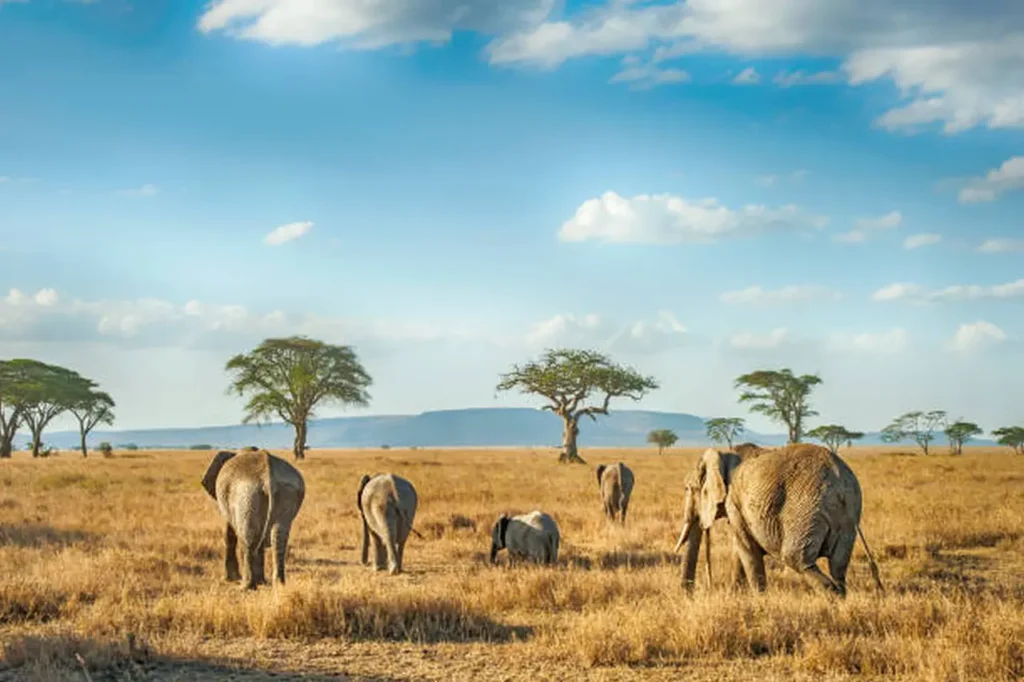
Here is some more information about Serengeti National Park
Serengeti National Park is a must-visit destination for nature enthusiasts, wildlife lovers, and those seeking an authentic African safari experience. Its vast landscapes and abundant wildlife make it an iconic destination for exploring the wonders of the natural world.
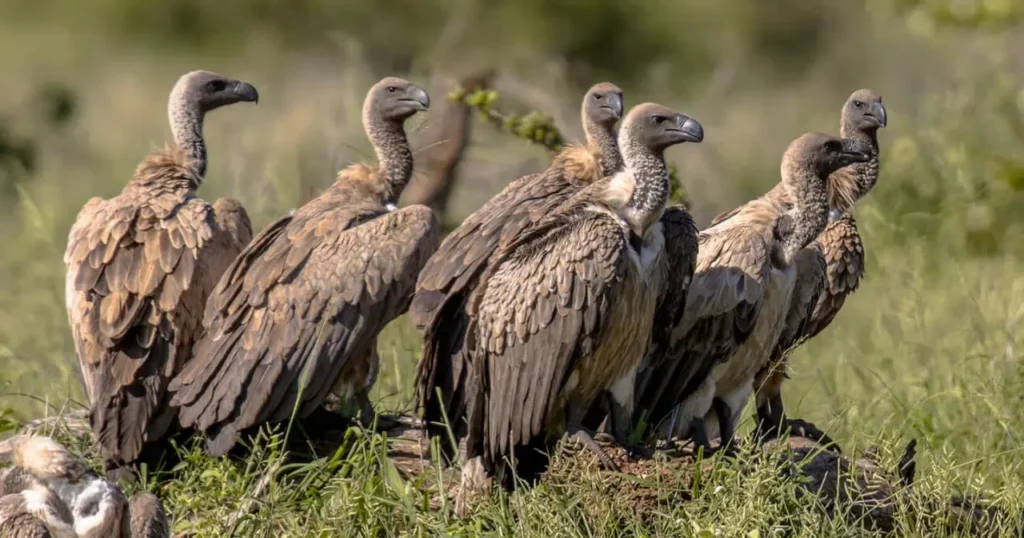
Size and Geography
Serengeti National Park covers an area of approximately 14,750 square kilometers (5,700 square miles). It encompasses a diverse range of landscapes, including vast grassy plains, riverine forests, acacia woodlands, and granite outcrops known as kopjes.
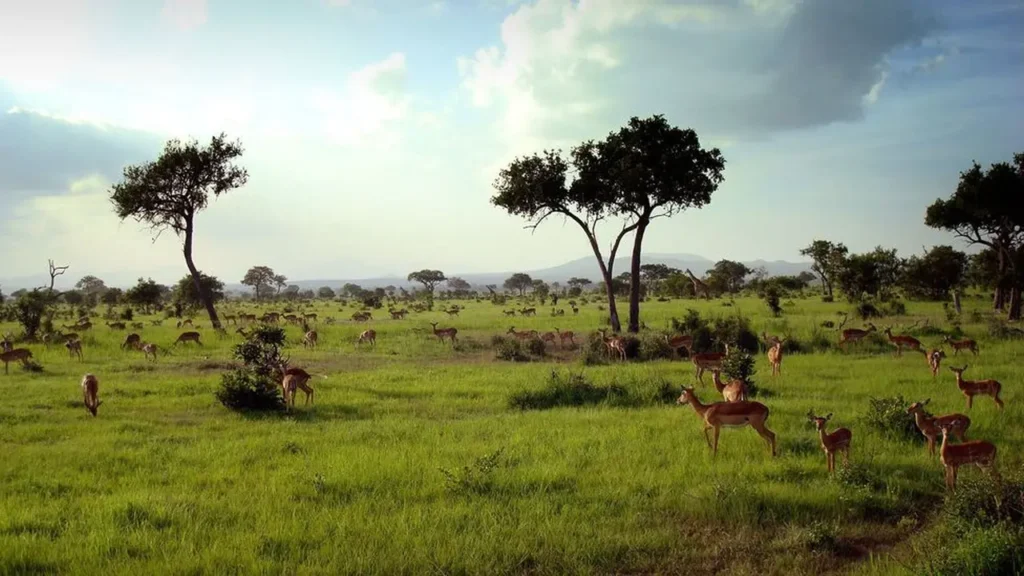
Wildlife
The park is famous for its incredible biodiversity and supports a high density of wildlife species. It is home to the renowned African Big Five—elephant, lion, leopard, rhinoceros, and buffalo. Other prominent species found in Serengeti include cheetahs, giraffes, zebras, wildebeests, hippos, crocodiles, hyenas, and a variety of antelope species.
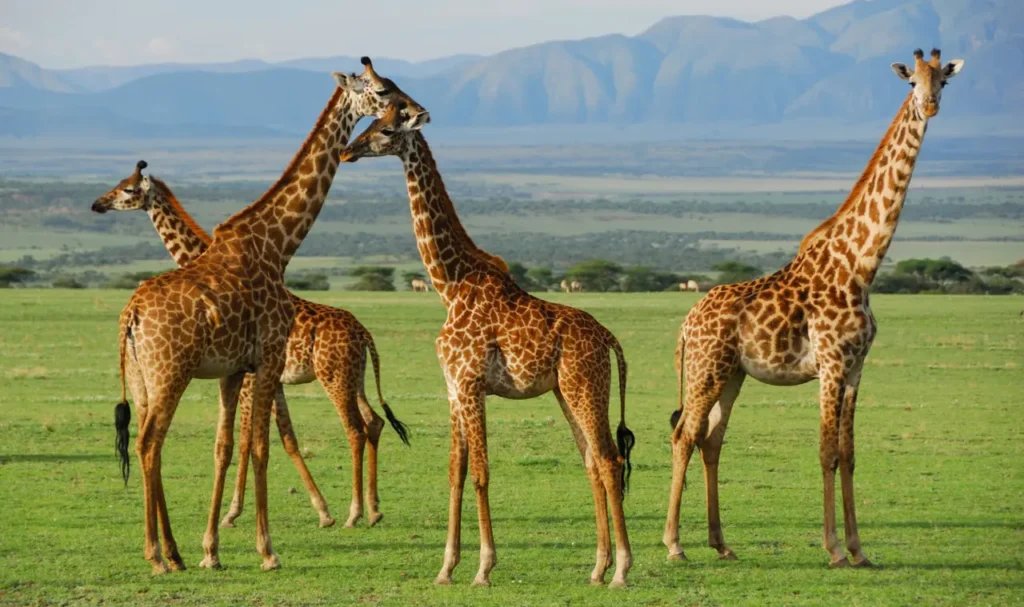

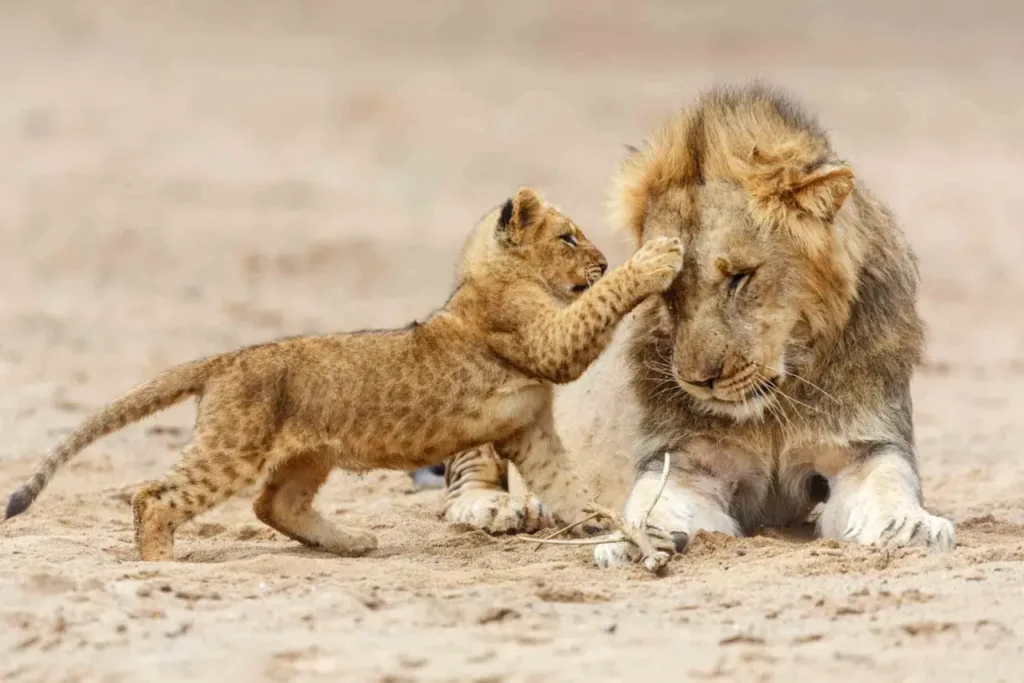
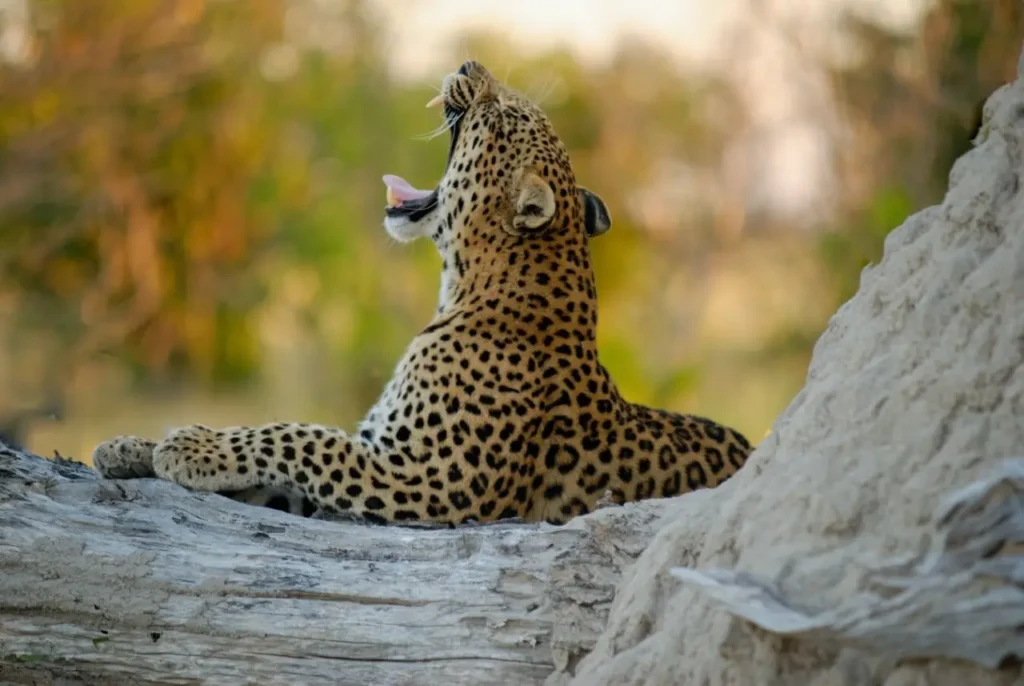
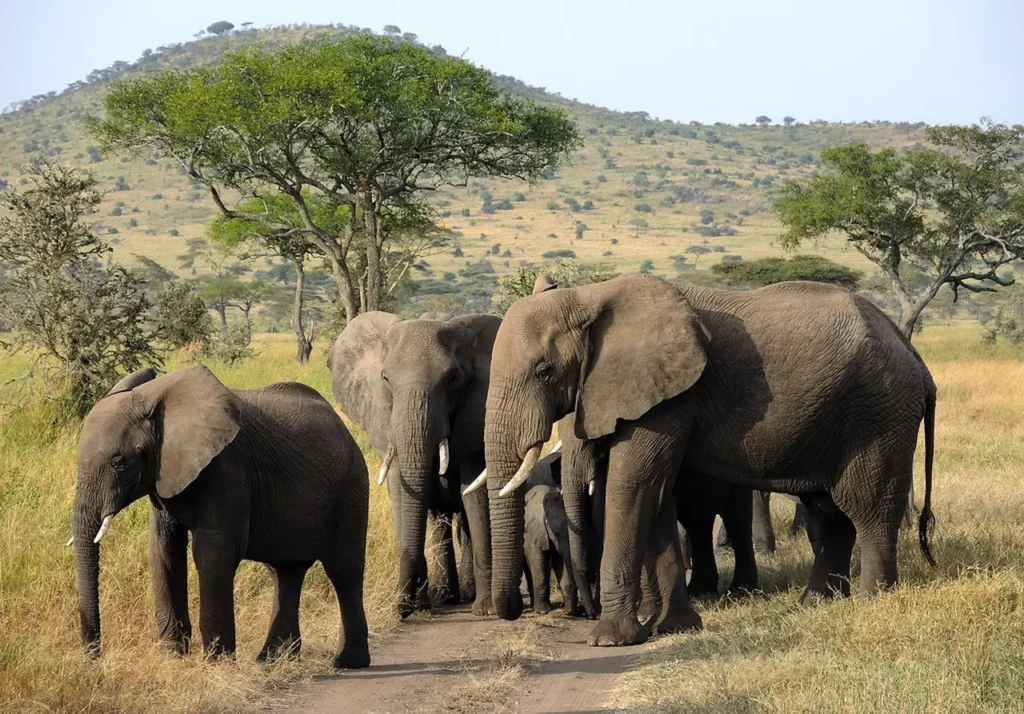
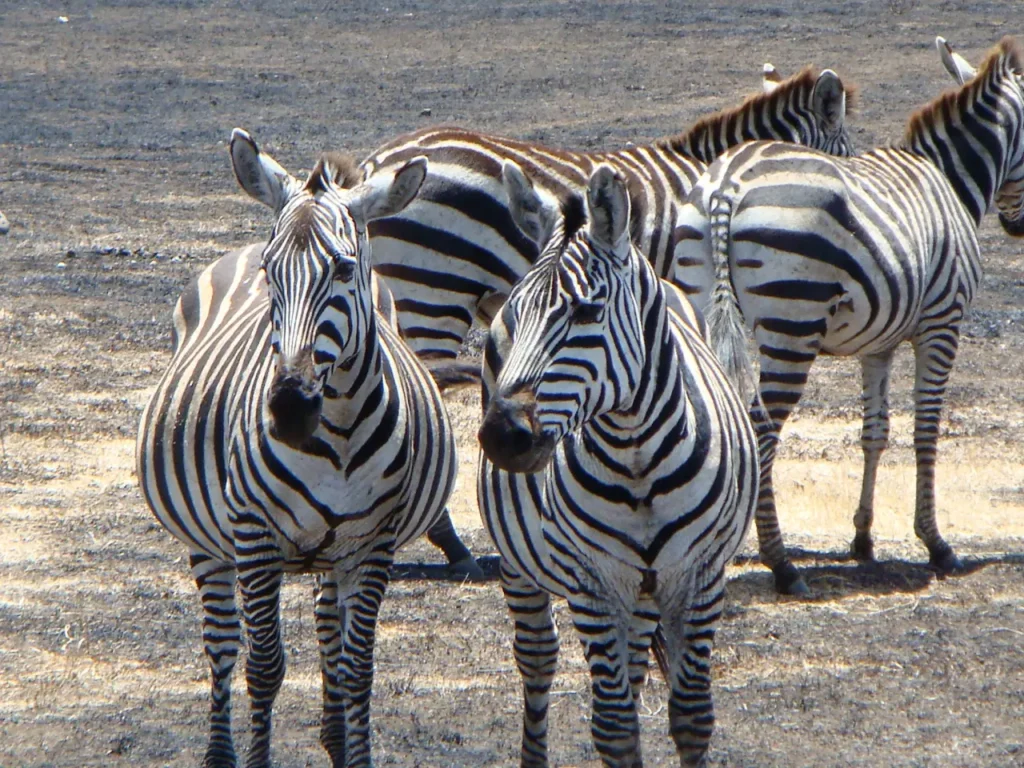
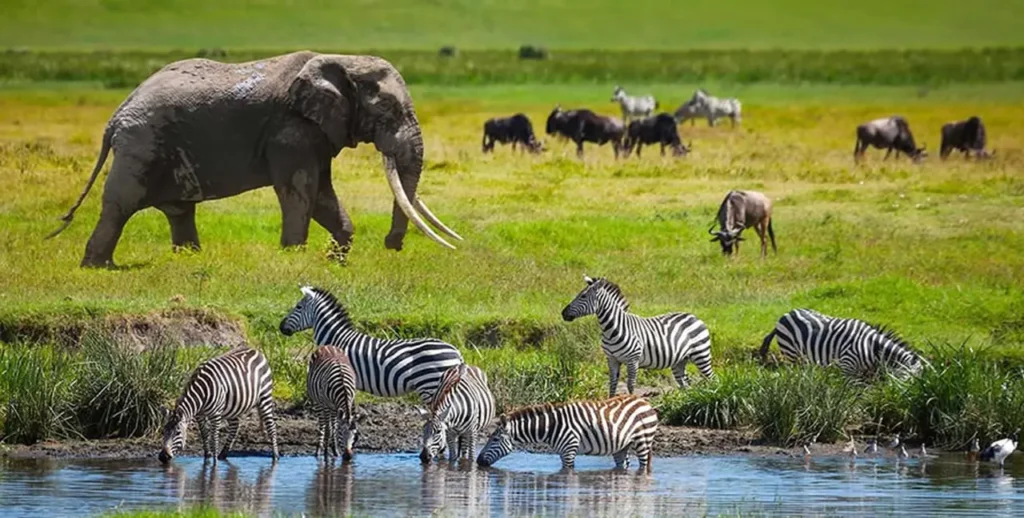
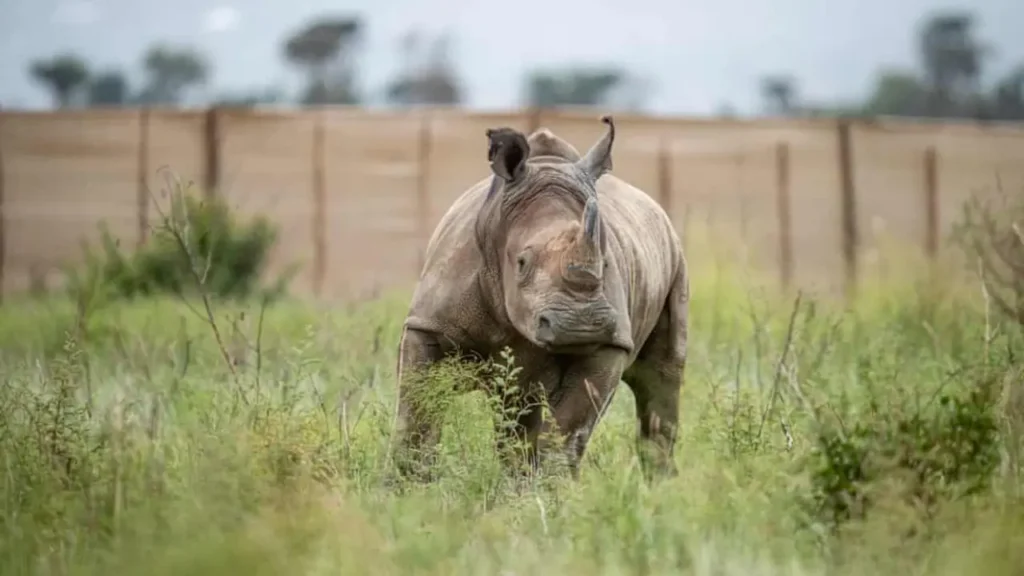
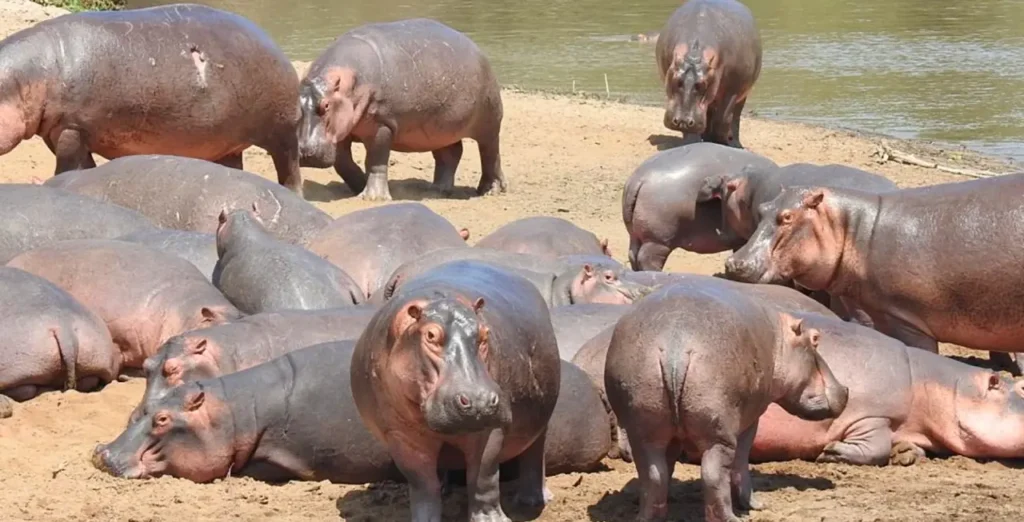
Great Migration
Serengeti is world-renowned for hosting the Great Migration, one of nature’s most spectacular events. Every year, over a million wildebeests, along with hundreds of thousands of zebras and gazelles, migrate in search of fresh grazing. This migration follows a circular pattern, driven by seasonal rainfall and the need for sustenance, making it an awe-inspiring wildlife spectacle.
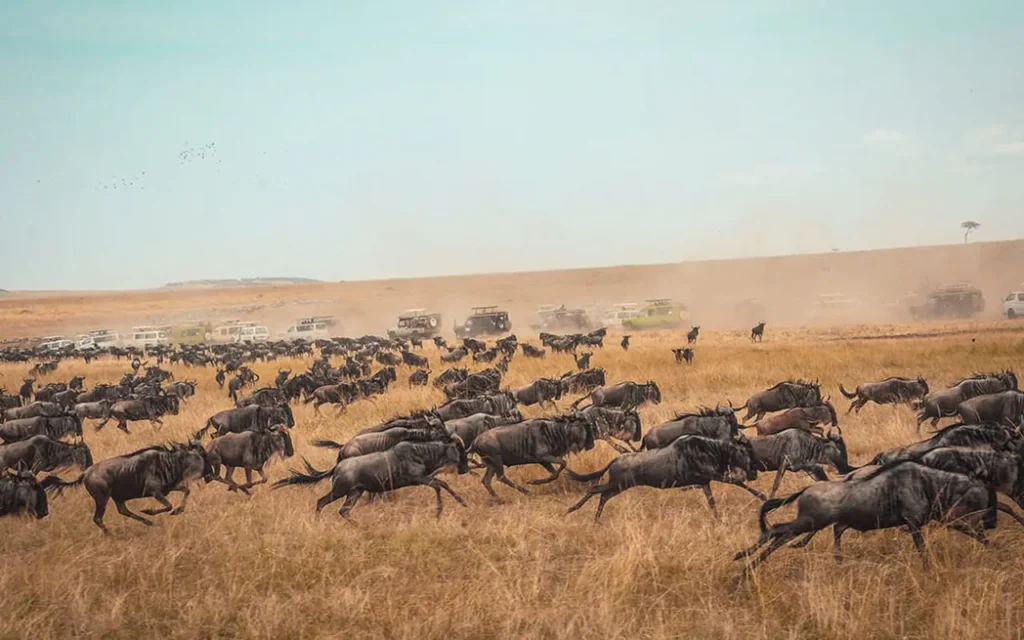
Birdlife
Serengeti National Park is also a paradise for birdwatchers, with over 500 bird species recorded in the area. Some of the notable species include ostriches, secretary birds, marabou storks, vultures, eagles, and colorful bee-eaters.
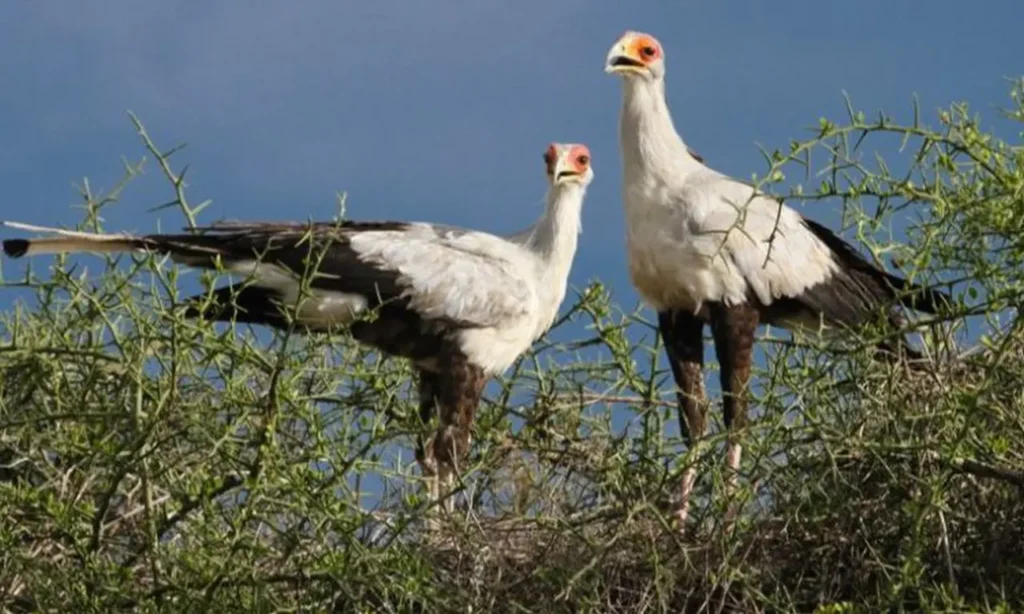
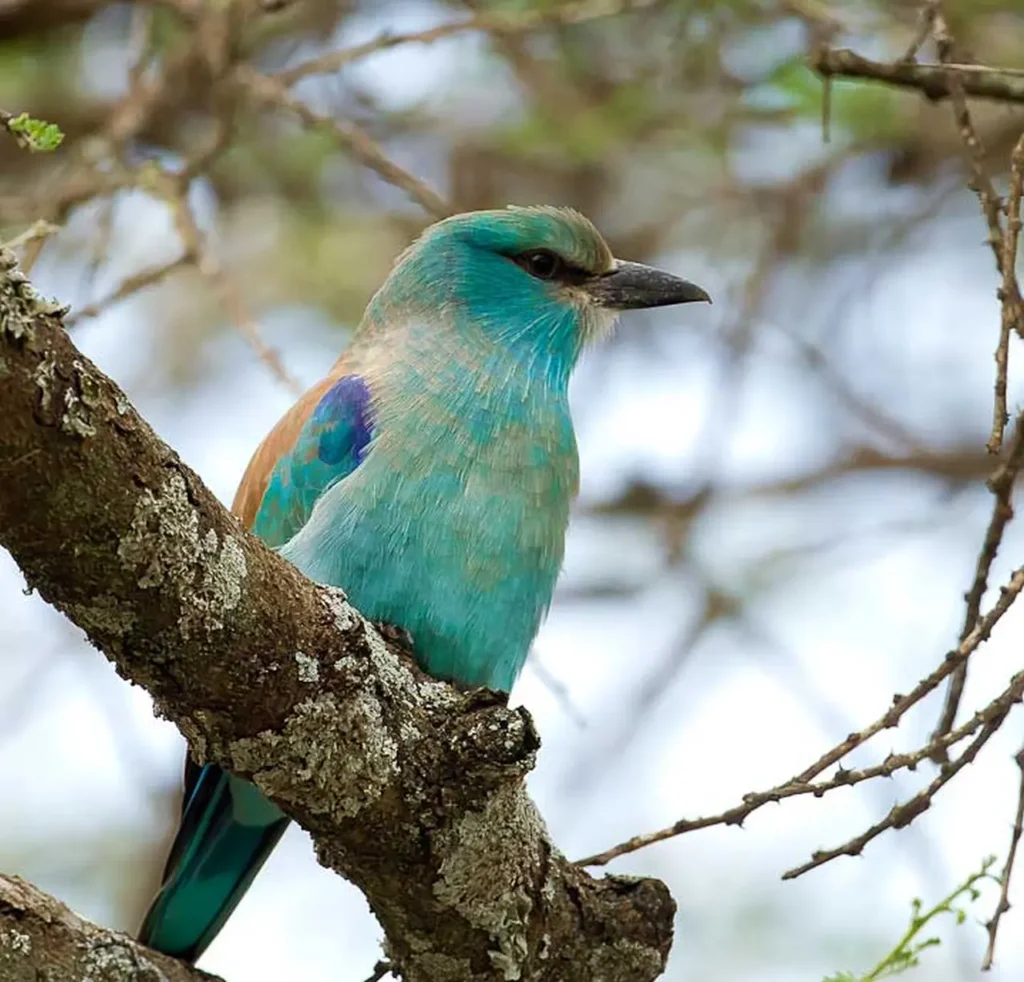
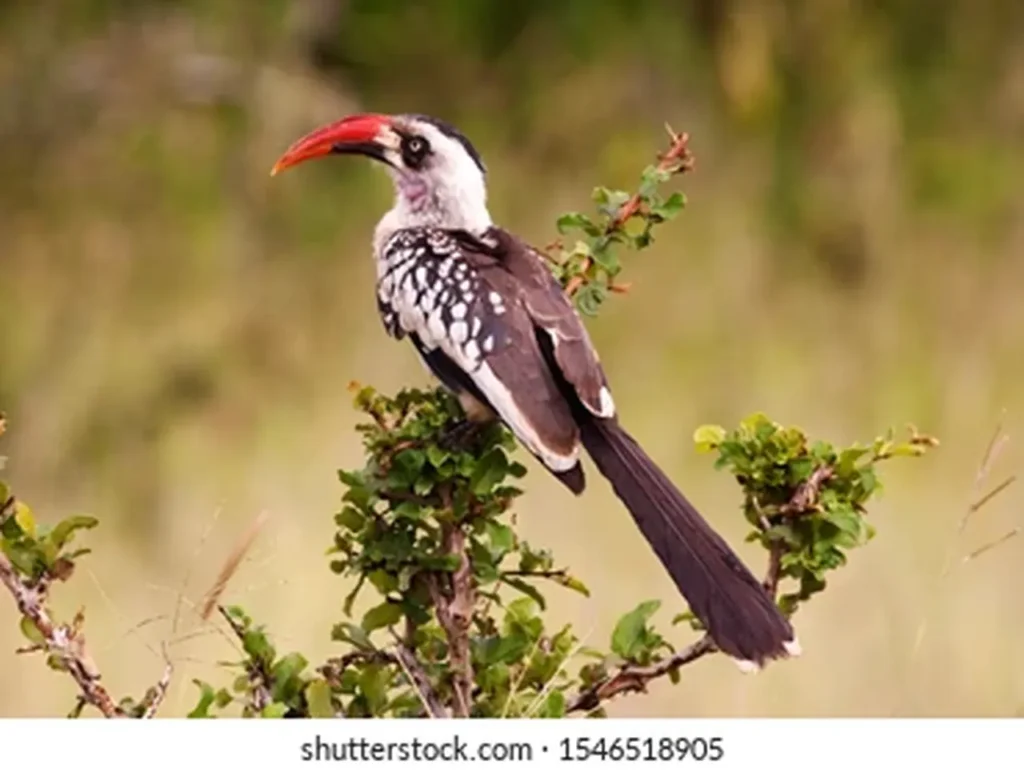
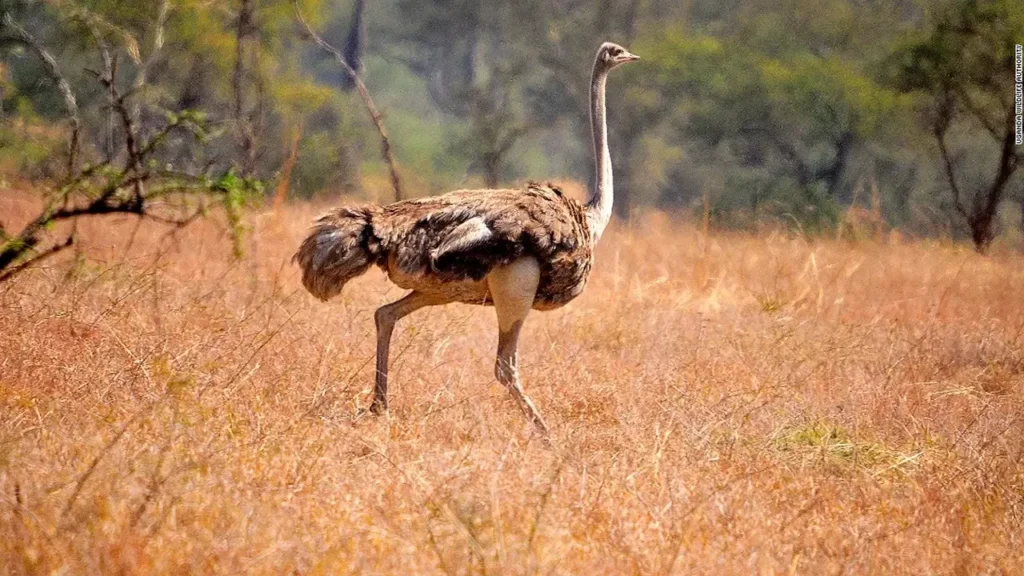
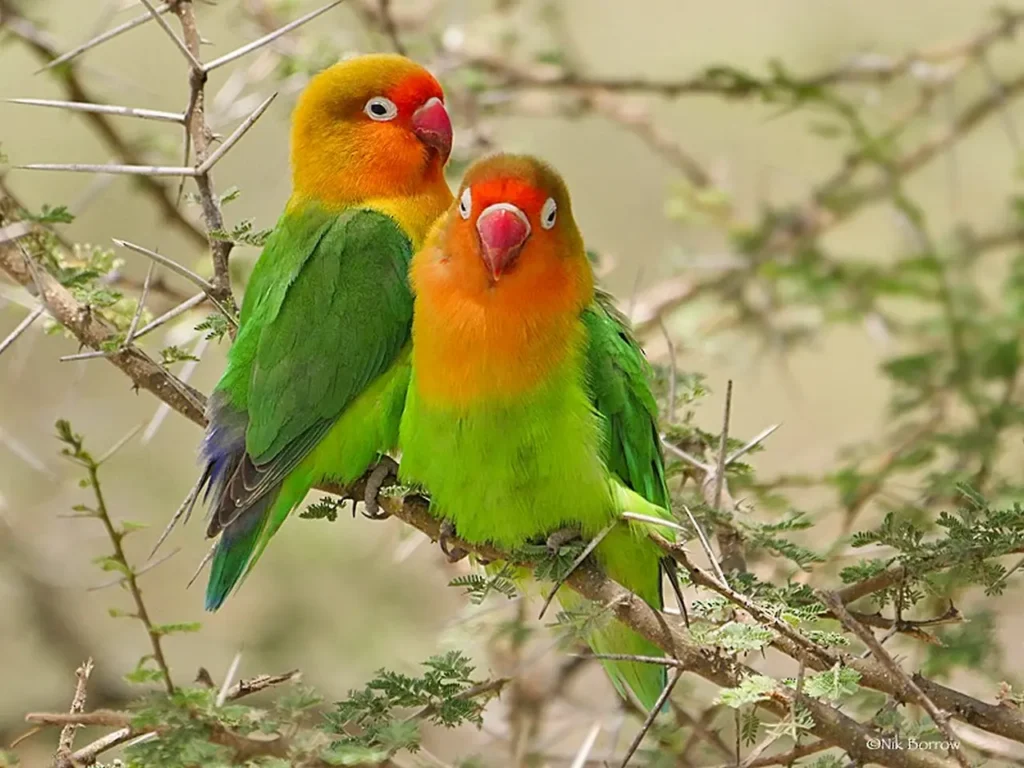
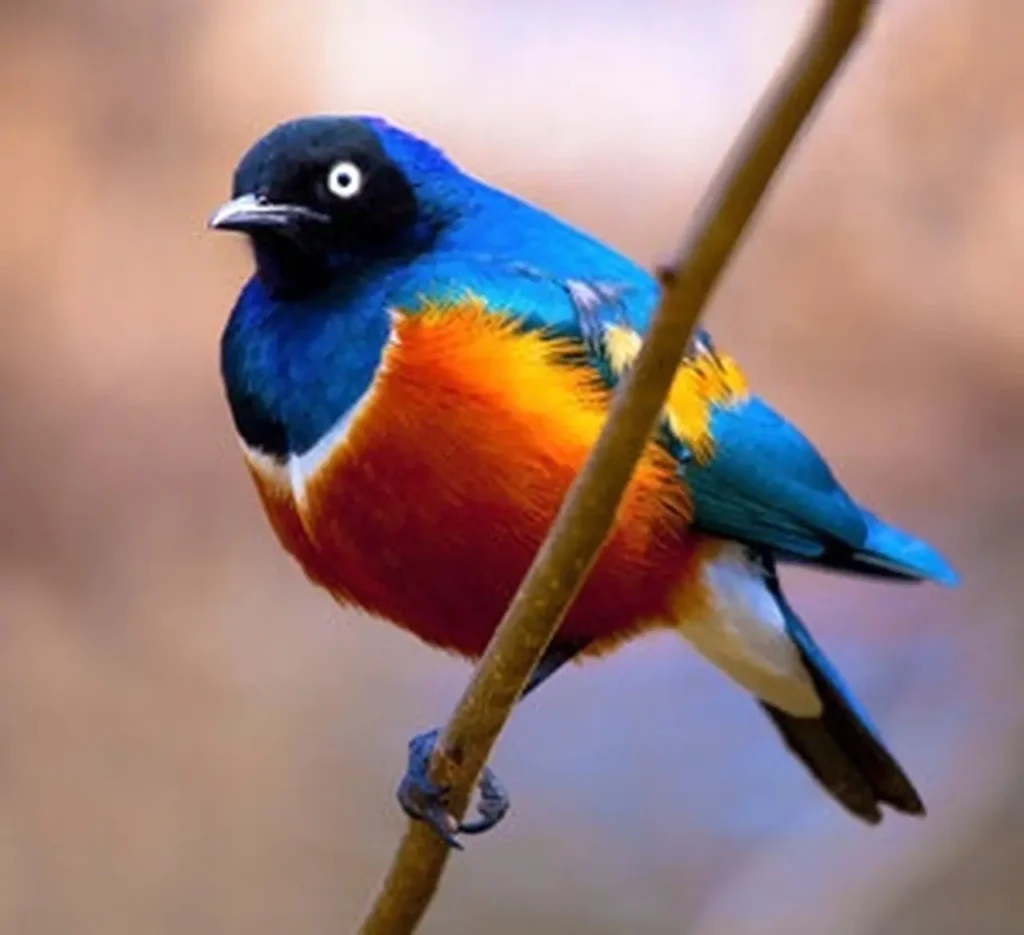
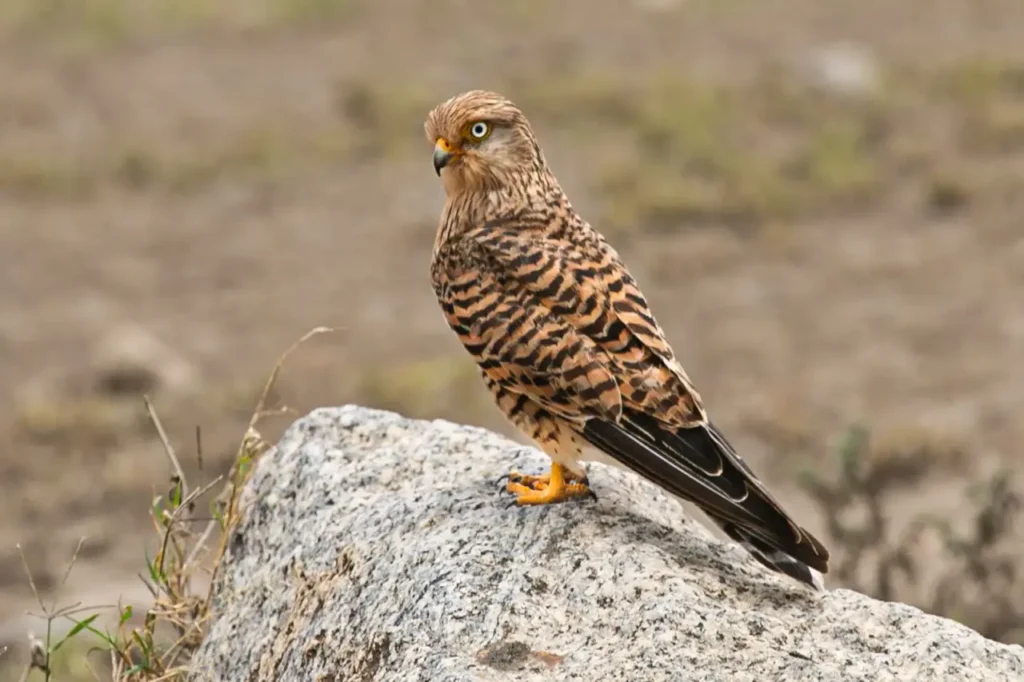
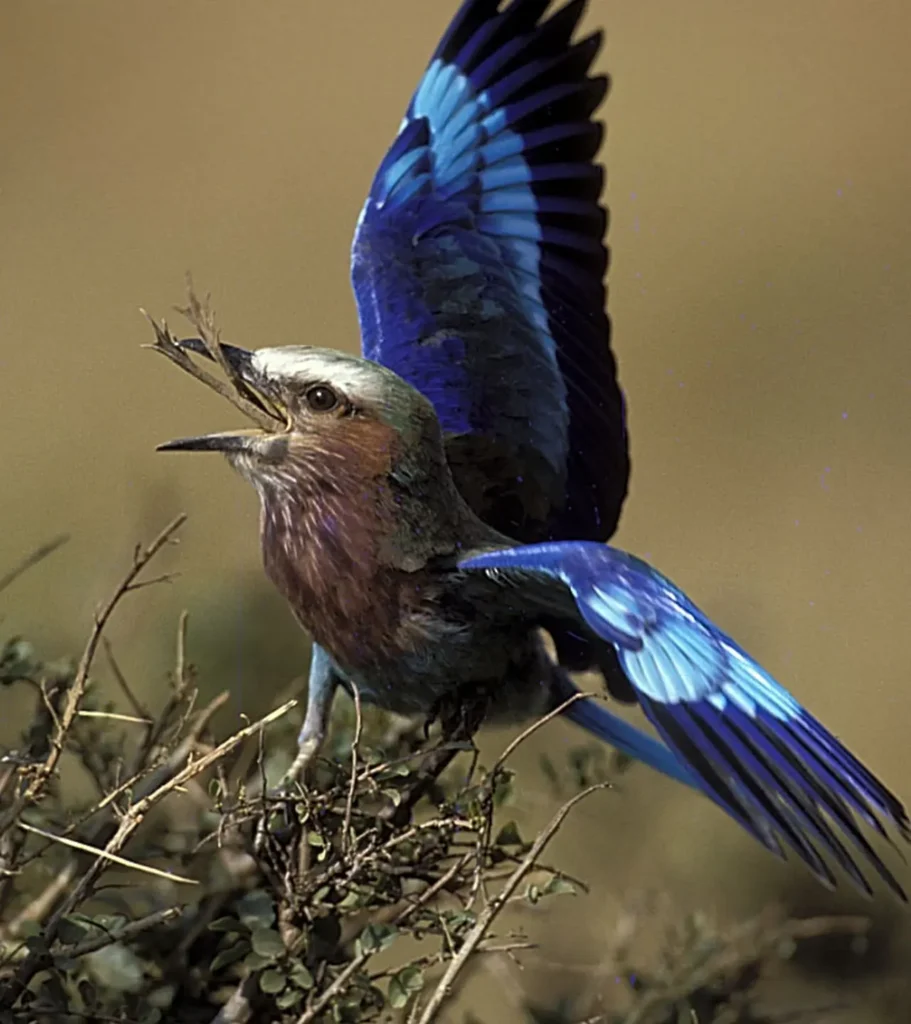
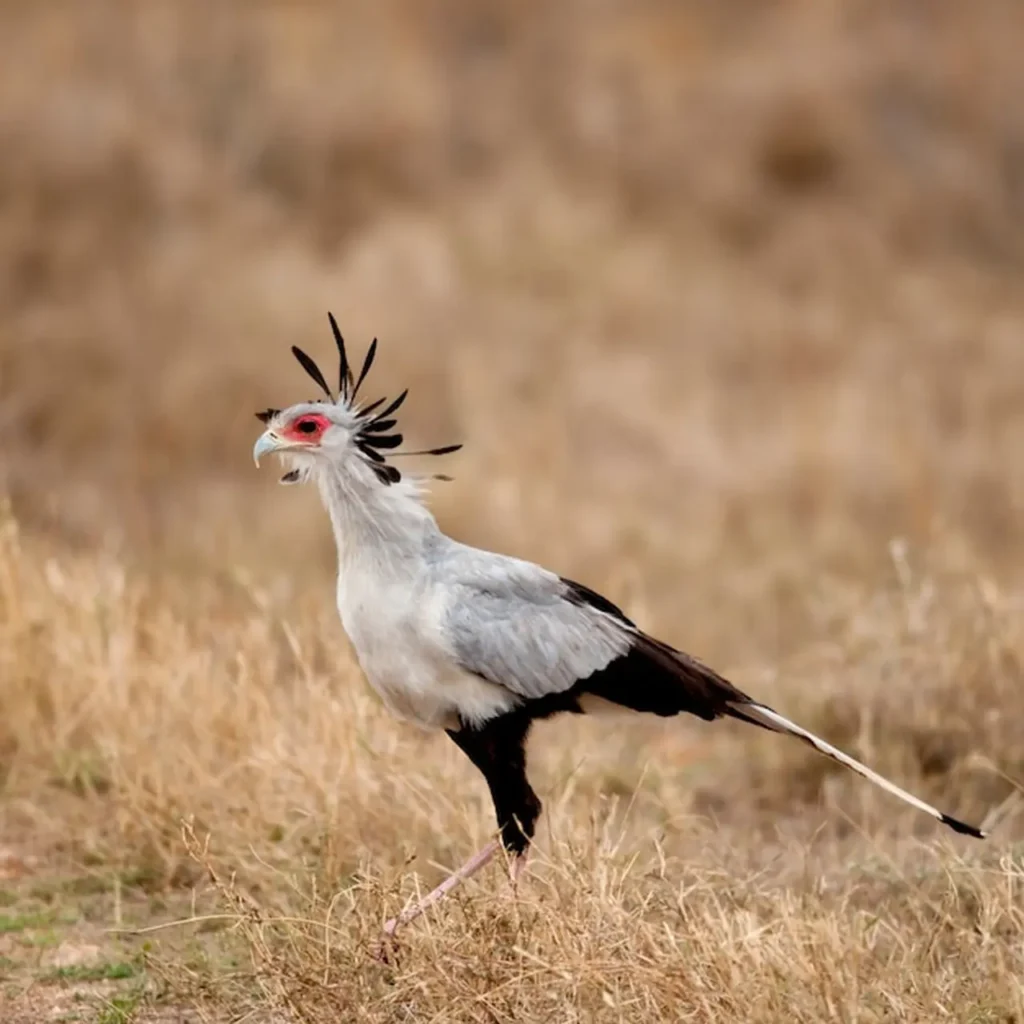
Conservation Efforts
Serengeti National Park is a UNESCO World Heritage Site and has been designated as one of the Seven Natural Wonders of Africa. It is protected under Tanzanian law, and efforts are in place to conserve its unique ecosystem and biodiversity. The park plays a vital role in wildlife conservation and research, contributing to our understanding of African ecosystems and promoting sustainable tourism practices.

Safari Experience
Visitors to Serengeti National Park have the opportunity to embark on thrilling safari adventures. Game drives allow visitors to explore the vast plains, witness wildlife up close, and capture stunning photographs. Hot air balloon safaris, guided walking safaris, and cultural interactions with local Maasai communities are also popular activities in the park.
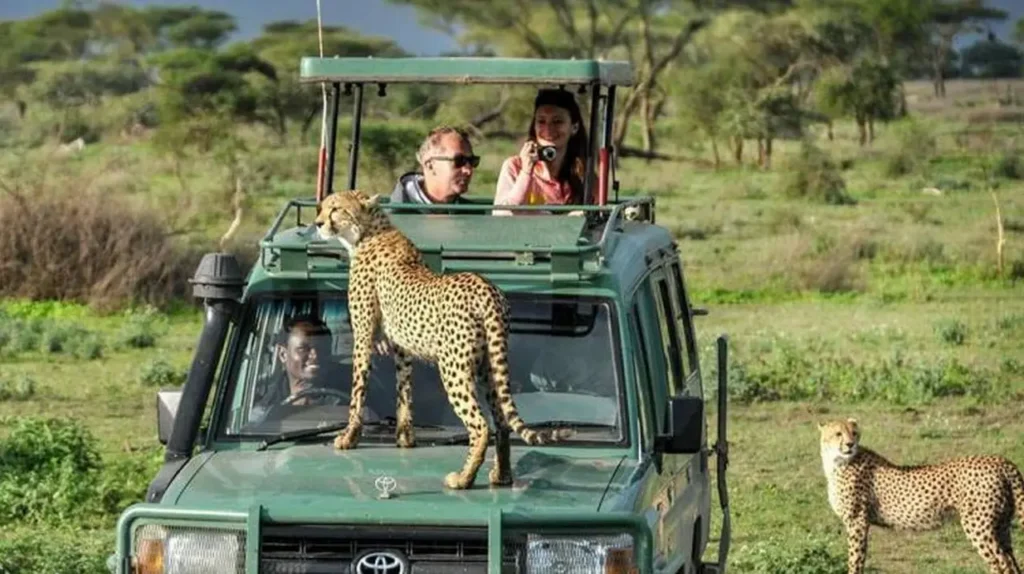
Accommodation
The park offers a range of accommodation options, including luxury lodges, tented camps, and campsites. These provide various levels of comfort and immersion in the natural surroundings, allowing visitors to have an unforgettable experience in the heart of the Serengeti.
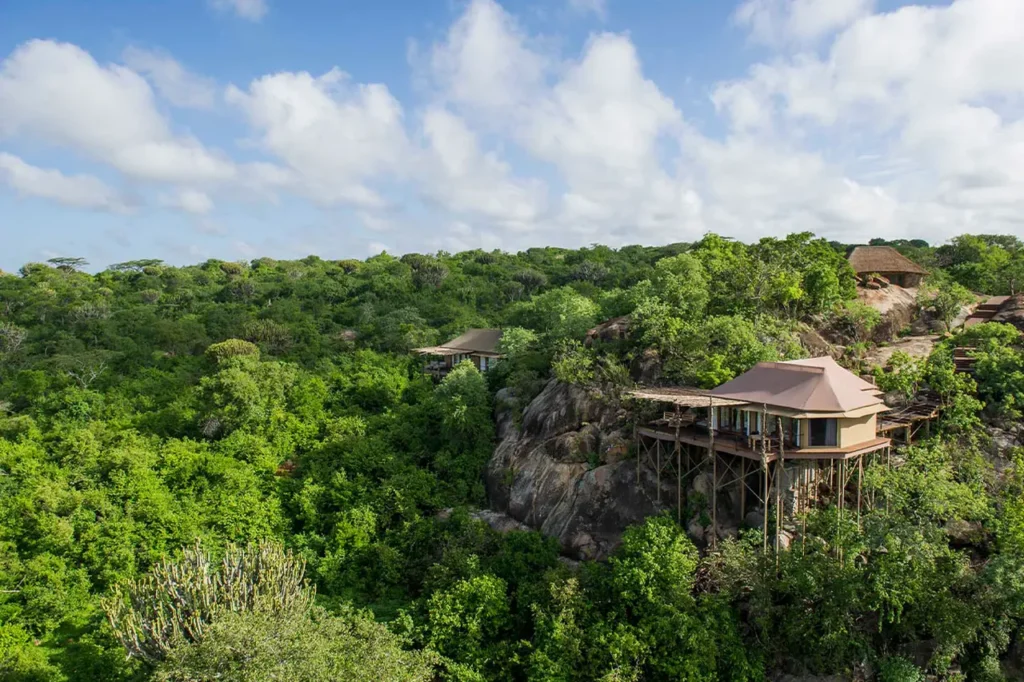
It’s important to note that Serengeti National Park experiences different seasons, which can impact wildlife sightings and the Great Migration’s location. It’s advisable to plan your visit accordingly to maximize your chances of witnessing these incredible natural phenomena.
Some activities can do at Serengeti National Park
There are numerous interesting things to experience in Serengeti National Park. Here are a few highlights:
Game Drives
Embark on game drives through the park’s vast grassy plains and diverse landscapes. Experienced safari guides will take you on thrilling adventures, allowing you to spot and learn about the various wildlife species that call the Serengeti home. Keep an eye out for lions, elephants, cheetahs, giraffes, and the many other fascinating creatures that roam the area.
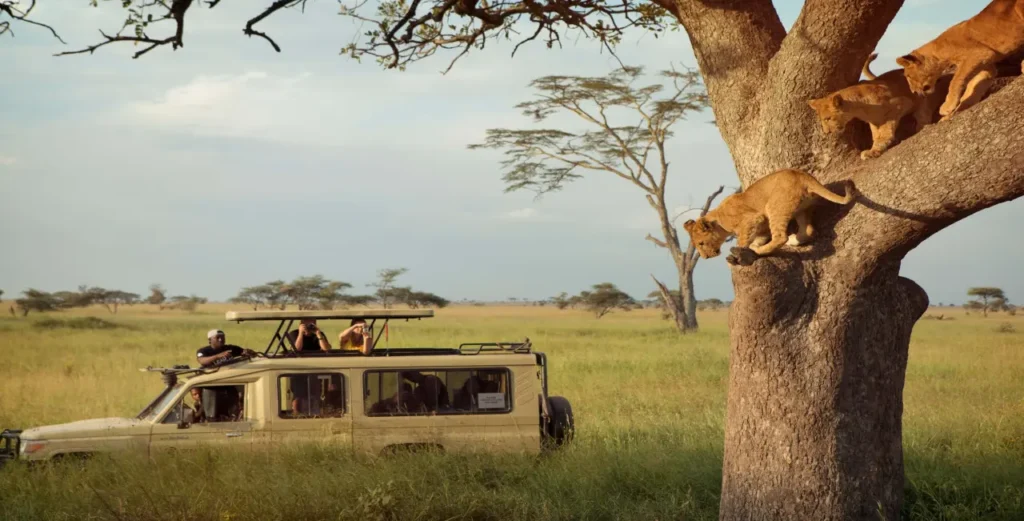
Hot Air Balloon Safaris
Take to the skies on a hot air balloon safari for a unique perspective of the Serengeti. Drifting above the savannah during sunrise, you can enjoy panoramic views of the wildlife below and the breathtaking landscapes that stretch as far as the eye can see.
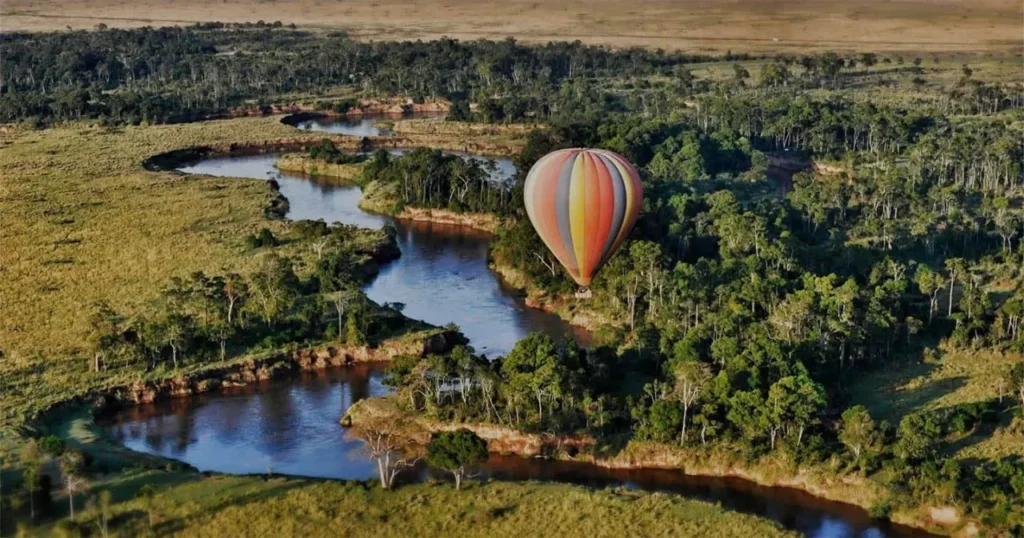
Walking Safaris
Explore the Serengeti on foot during a guided walking safari. Accompanied by armed rangers and expert guides, you can gain a deeper understanding of the smaller aspects of the ecosystem, such as the flora, birdlife, and animal tracks. Walking safaris provide an intimate and immersive experience in the wilderness.

Maasai Culture
Engage with the local Maasai communities and learn about their rich cultural heritage. The Maasai people are traditionally semi-nomadic pastoralists who have coexisted with the wildlife in the Serengeti for centuries. You can visit Maasai villages, interact with the locals, and gain insights into their customs, traditions, and way of life.
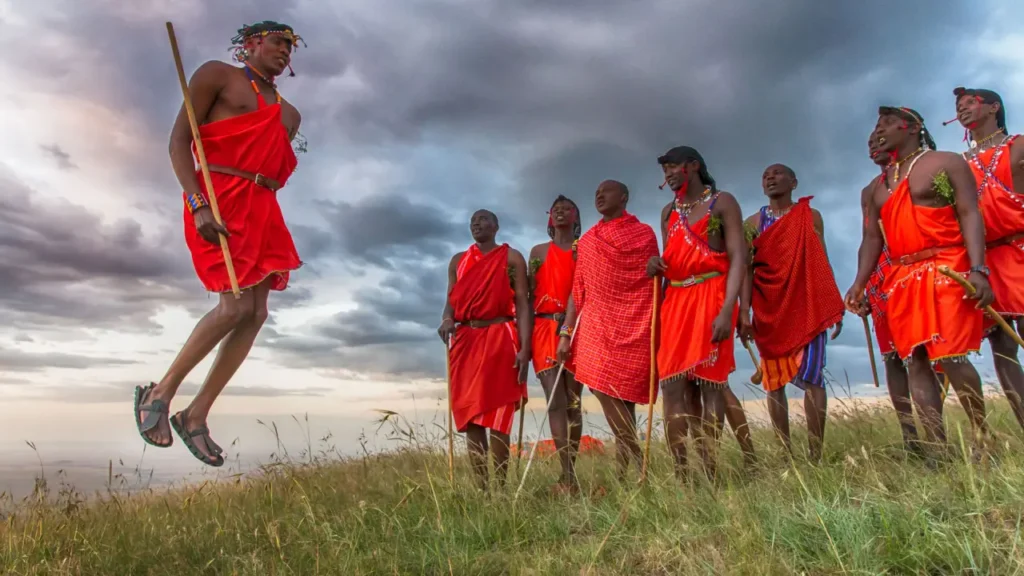
Night Game Drives
Experience the Serengeti after dark by embarking on a night game drive. Equipped with spotlights, you can search for nocturnal creatures such as leopards, hyenas, and servals. It’s a unique opportunity to witness the park’s wildlife in a different light and observe their behavior during the nighttime hours.
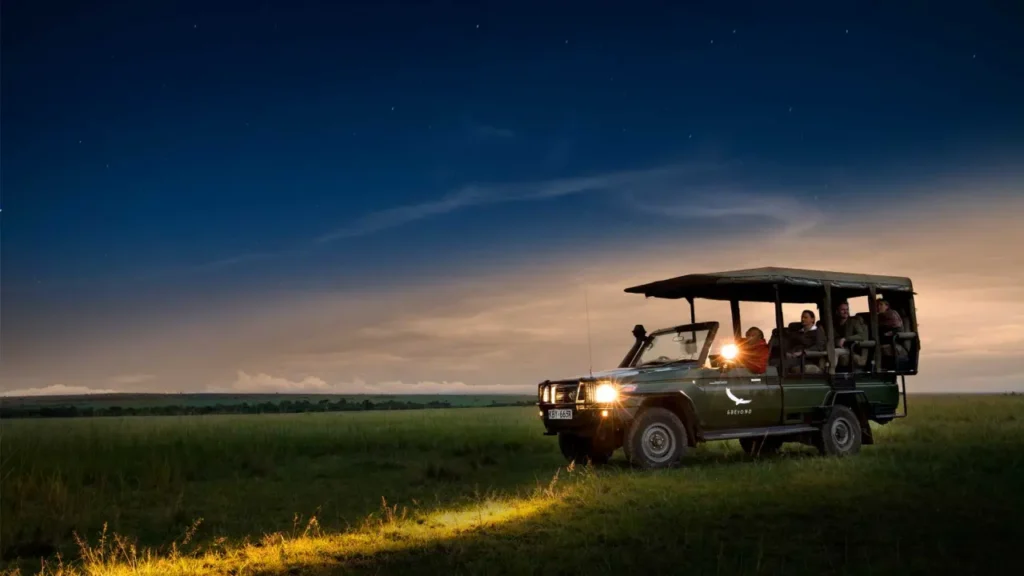
These are just a few of the many interesting experiences that await you in the Serengeti National Park. Each adventure provides a deeper understanding of the park’s ecosystem, wildlife, and cultural significance, ensuring an enriching and memorable visit.
When we can see at Serengeti National Park
During your visit to Serengeti National Park, you can expect to see a wide variety of wildlife and stunning natural landscapes. Here are some of the highlights.

African Big Five: Serengeti is home to the iconic African Big Five, which includes elephants, lions, leopards, rhinoceroses, and buffaloes. These magnificent animals can often be spotted during game drives, especially in the central and southern regions of the park.
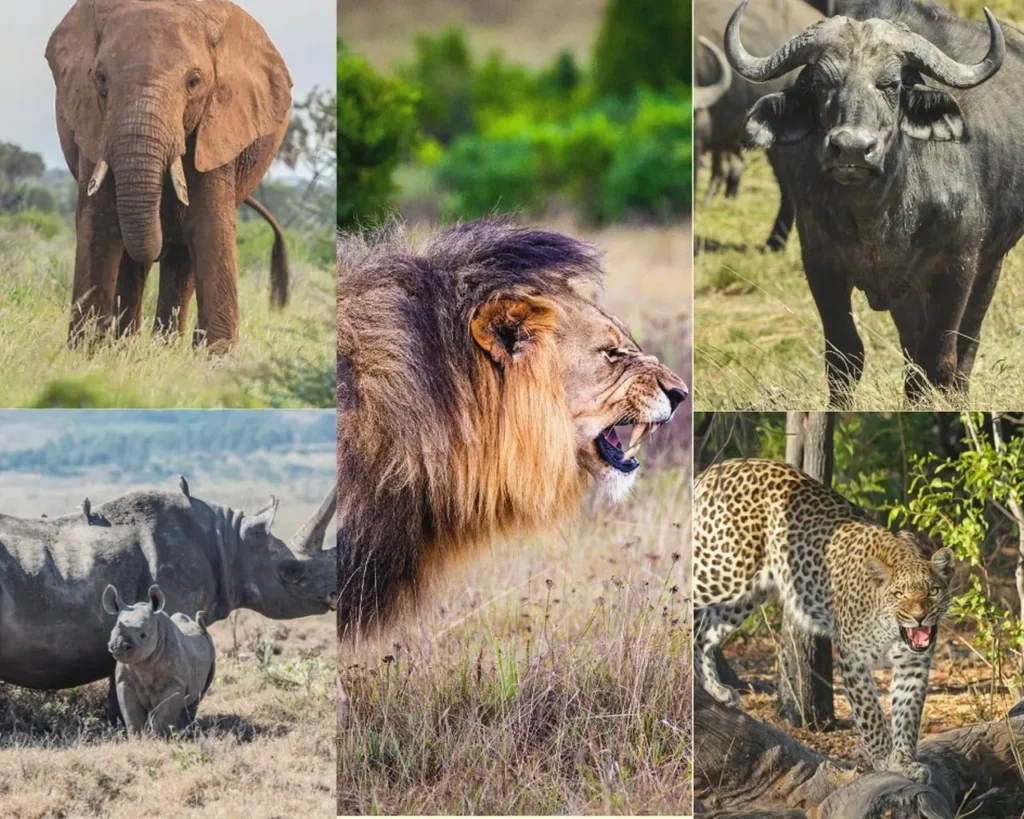
Wildebeests, Zebras, and Gazelles: The Great Migration is one of the most remarkable wildlife spectacles in the world, and it takes place in the Serengeti. Witness the vast herds of wildebeests, zebras, and gazelles as they move across the plains in search of food and water. The sheer number of animals is awe-inspiring and provides incredible opportunities for wildlife viewing.
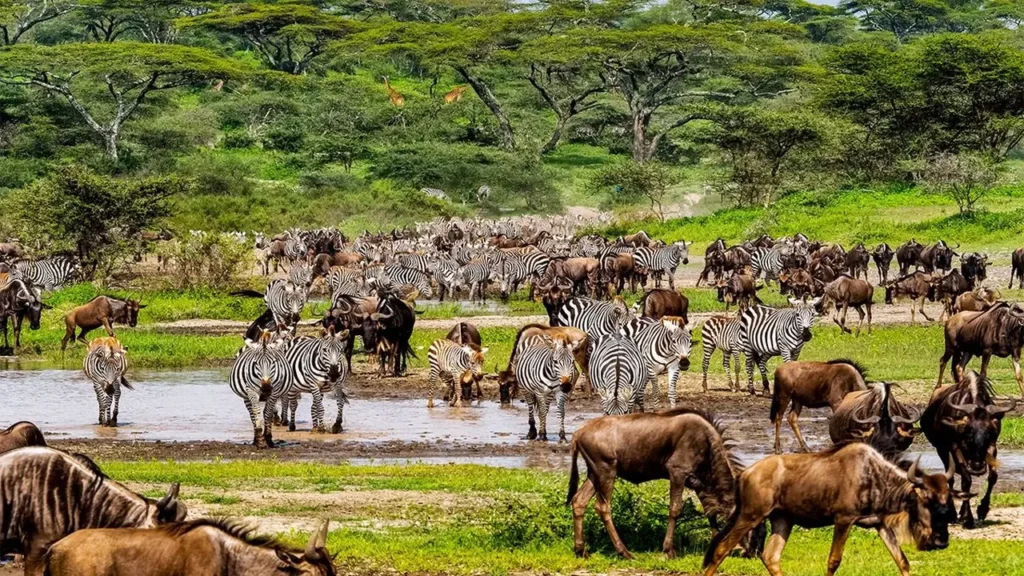
Cheetahs: The Serengeti is known for its healthy cheetah population. These magnificent predators can be seen stalking their prey across the open grasslands. Witnessing a cheetah in action, with its incredible speed and agility, is a thrilling experience.
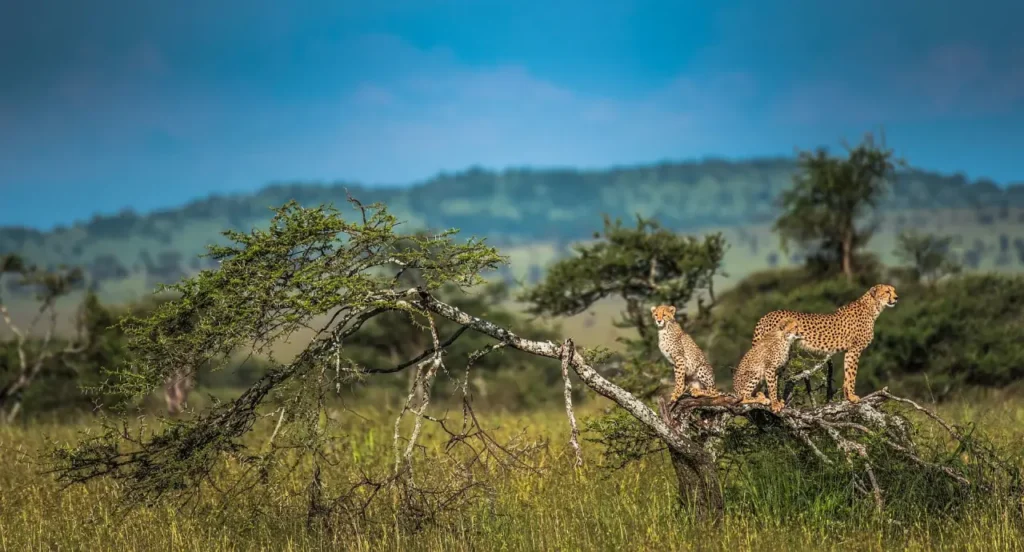
Giraffes: Serengeti National Park is also home to a significant population of giraffes. These elegant and graceful creatures can be seen wandering the savannah, gracefully munching on leaves from acacia trees.
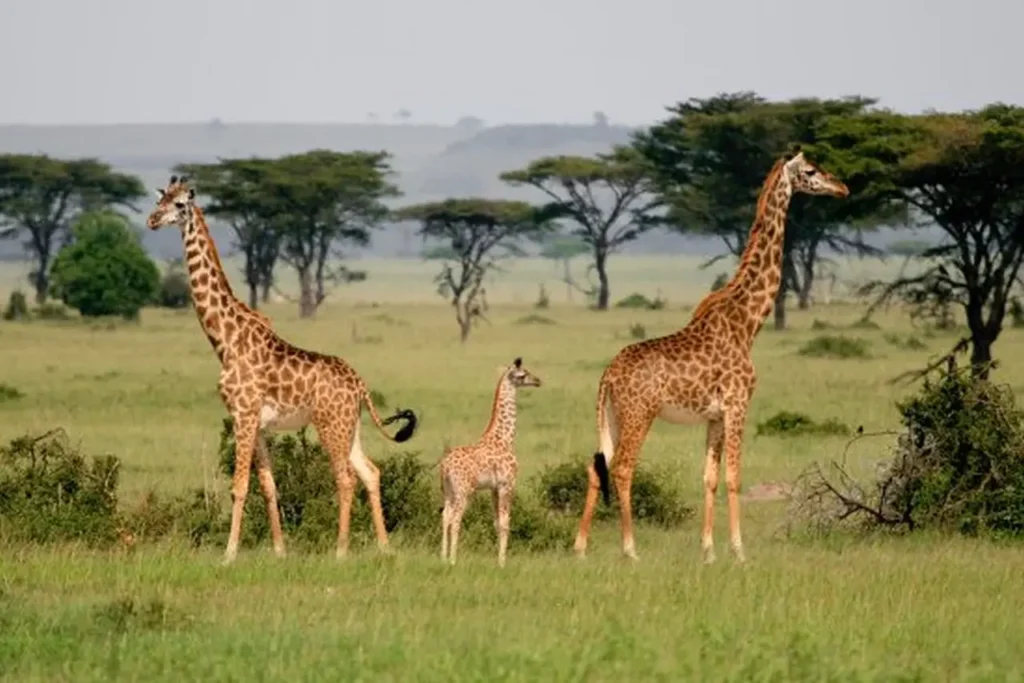
Hippos and Crocodiles: Along the park’s rivers and waterways, such as the Grumeti River and the Mara River, you can spot hippos and crocodiles. These formidable aquatic creatures can be observed basking in the sun or submerged in the water, providing an exciting sight during game drives or river safaris.

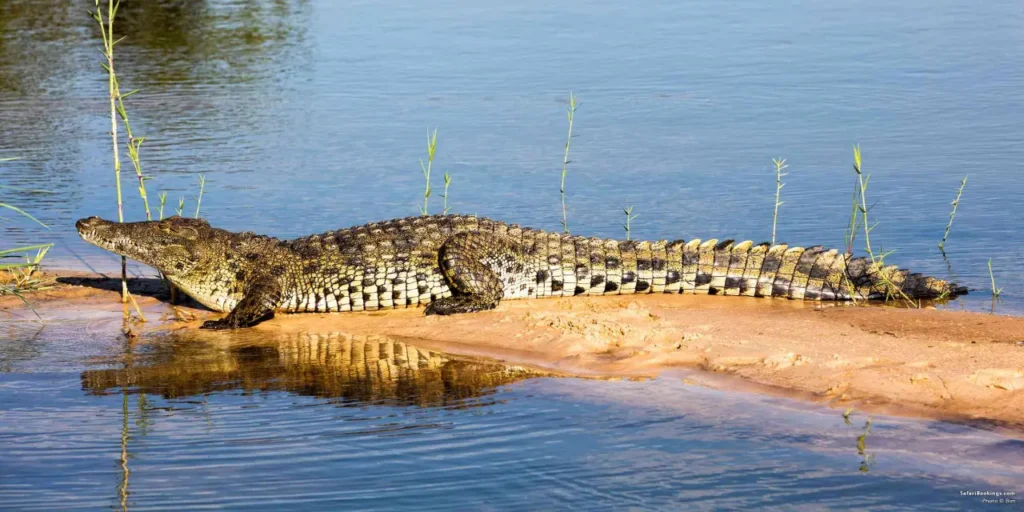
Birds: Serengeti National Park boasts an impressive array of bird species, making it a paradise for birdwatching enthusiasts. Keep an eye out for eagles, vultures, ostriches, secretary birds, colorful bee-eaters, and various water birds near the park’s lakes and rivers.
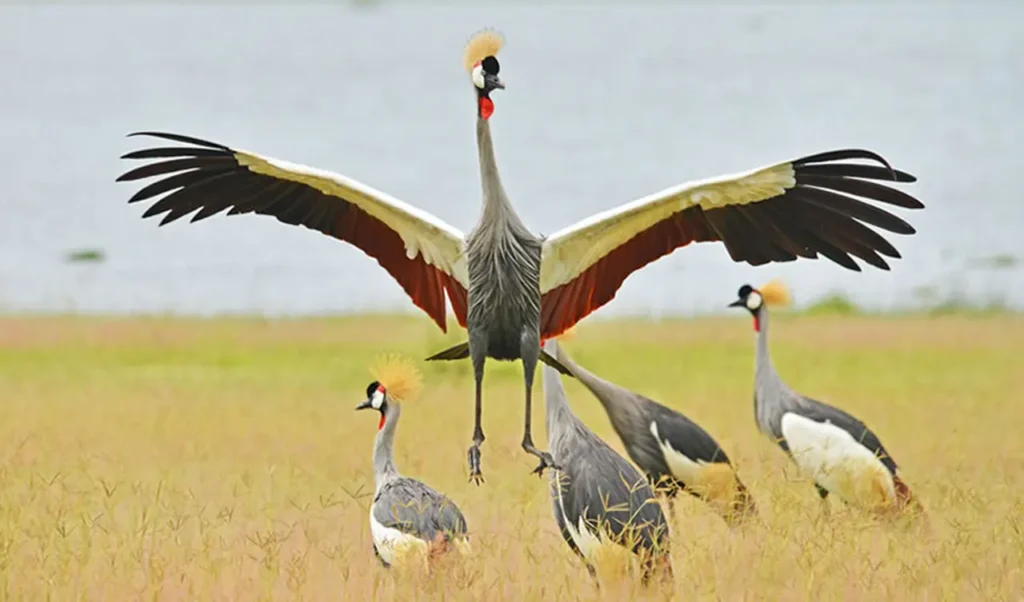
Scenic Landscapes: Serengeti’s landscapes are diverse and breathtaking. From expansive grassy plains to rocky outcrops known as kopjes, and from lush riverine forests to golden savannahs, the park offers stunning natural beauty at every turn. You can capture incredible photographs and enjoy the sheer serenity of the surroundings.
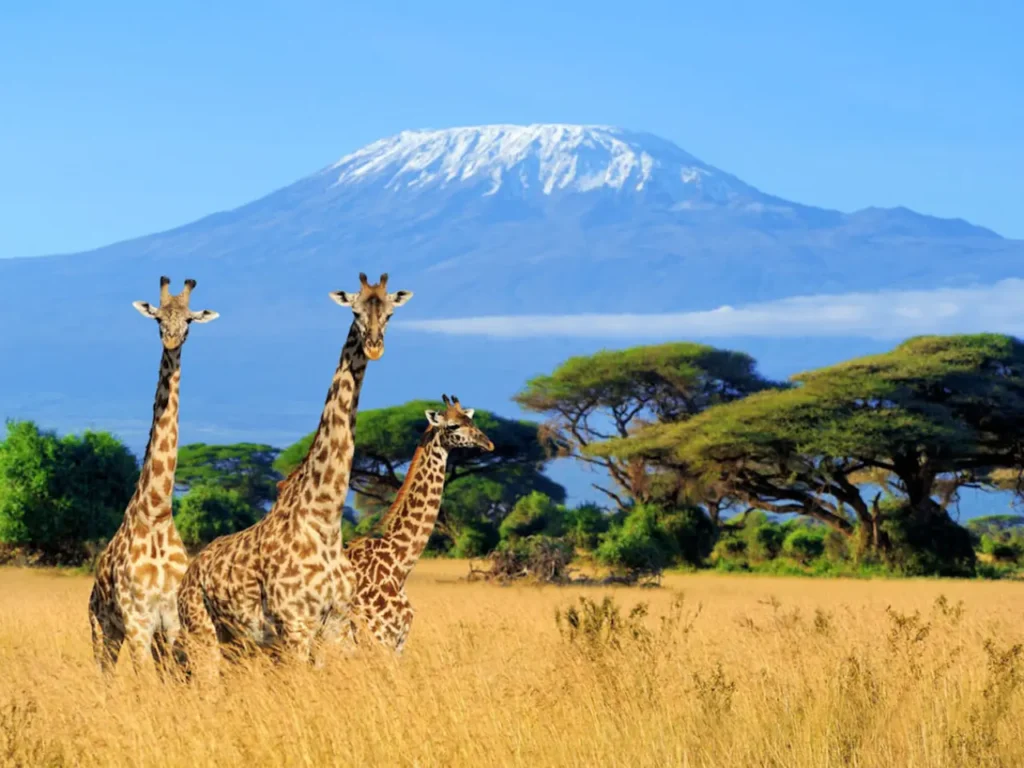
It’s important to note that wildlife sightings can vary depending on the season and the specific location within the park. However, with the park’s abundant wildlife populations, diverse ecosystems, and experienced guides, you’re likely to encounter an incredible array of animals and enjoy unforgettable moments during your visit to Serengeti National Park.
Serengeti National Park is known for its diverse and picturesque natural landscapes. Here are some of the notable features you can expect to see
Serengeti Plains
The vast Serengeti Plains are the iconic image of the park. These seemingly endless grasslands stretch as far as the eye can see, providing a habitat for a multitude of wildlife species. The plains are characterized by golden savannahs, dotted with acacia trees, and serve as the backdrop for the Great Migration.
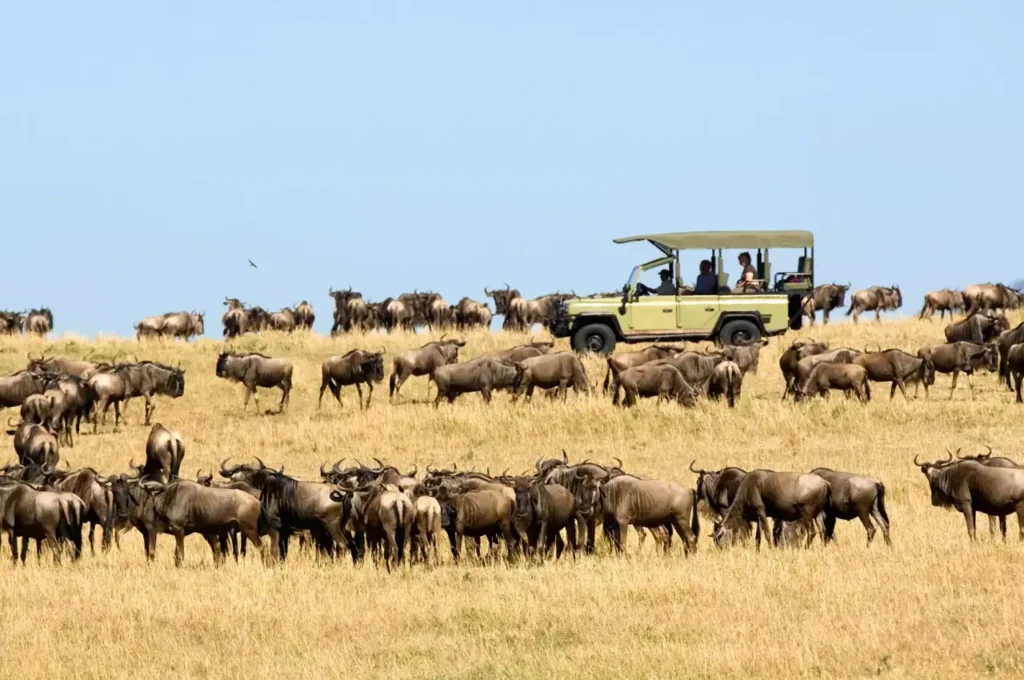
Kopjes
Kopjes are granite rock formations scattered throughout the Serengeti. These ancient and weathered outcrops create unique and photogenic landscapes. They provide vantage points for predators like lions and leopards and offer refuge to various other animals. Kopjes also serve as scenic spots for game drives and are often visited by wildlife seeking shade or a place to rest.
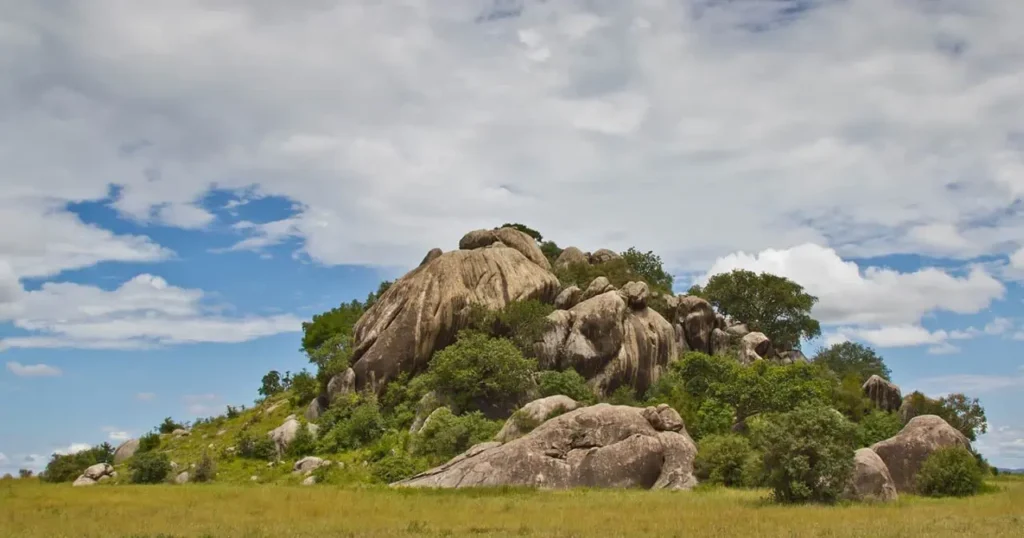
Riverine Forests
The park is crisscrossed by several rivers, including the Grumeti and Mara rivers. These riverine areas are characterized by lush forests, providing a stark contrast to the open plains. The forests offer habitat to a variety of bird species, primates, and smaller mammals. They are also prime locations for observing hippos, crocodiles, and other water-dependent animals.
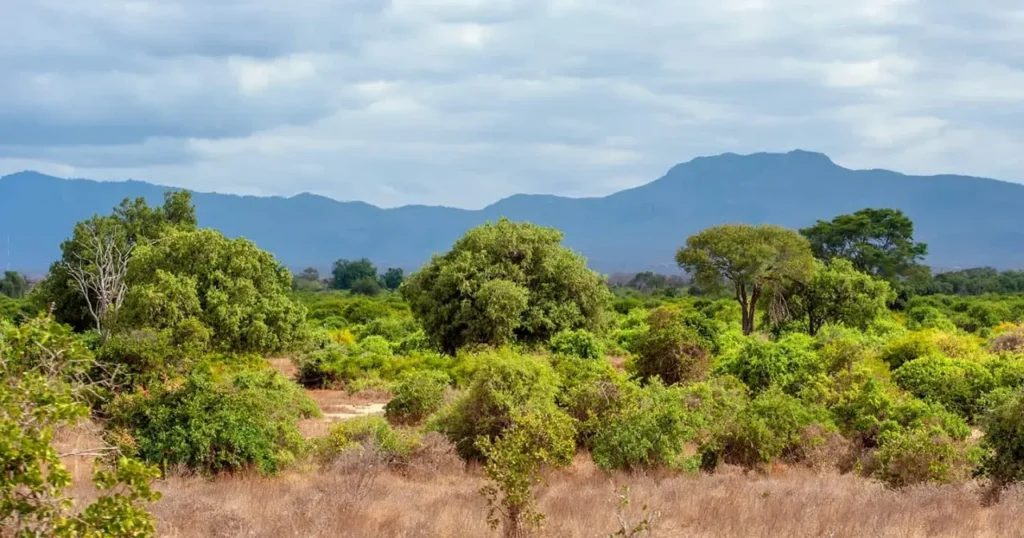
Acacia Woodlands
Throughout the Serengeti, you will find patches of acacia woodlands. These woodlands are dominated by acacia trees, providing shade and food sources for animals. The woodlands offer a different perspective and atmosphere compared to the open plains, with a denser canopy and a mix of grasses and shrubs.
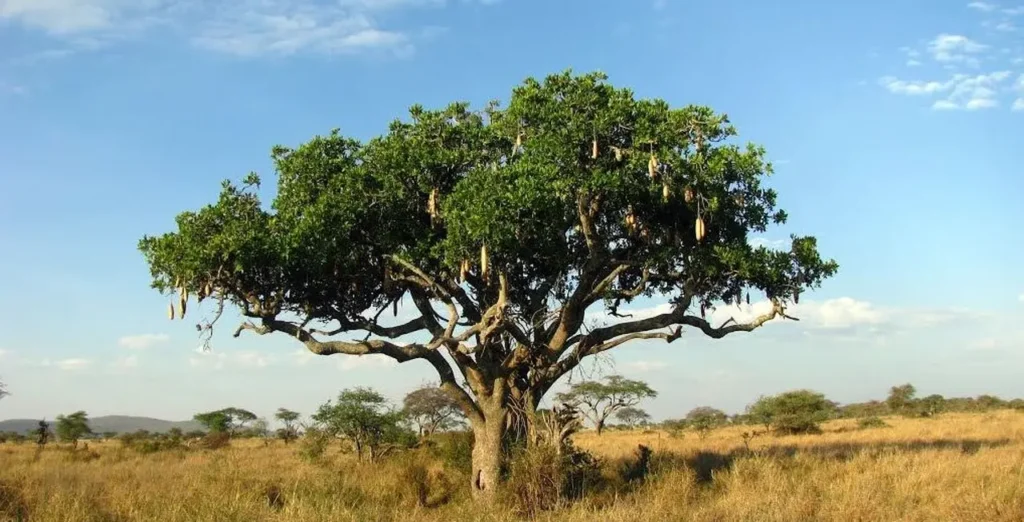
Swamps and Wetlands
In certain areas of the park, you’ll come across swamps and wetlands, particularly during the rainy season. These marshy areas attract an abundance of birdlife and serve as a vital water source for wildlife. They create beautiful reflections and contribute to the overall diversity of the park’s ecosystems.
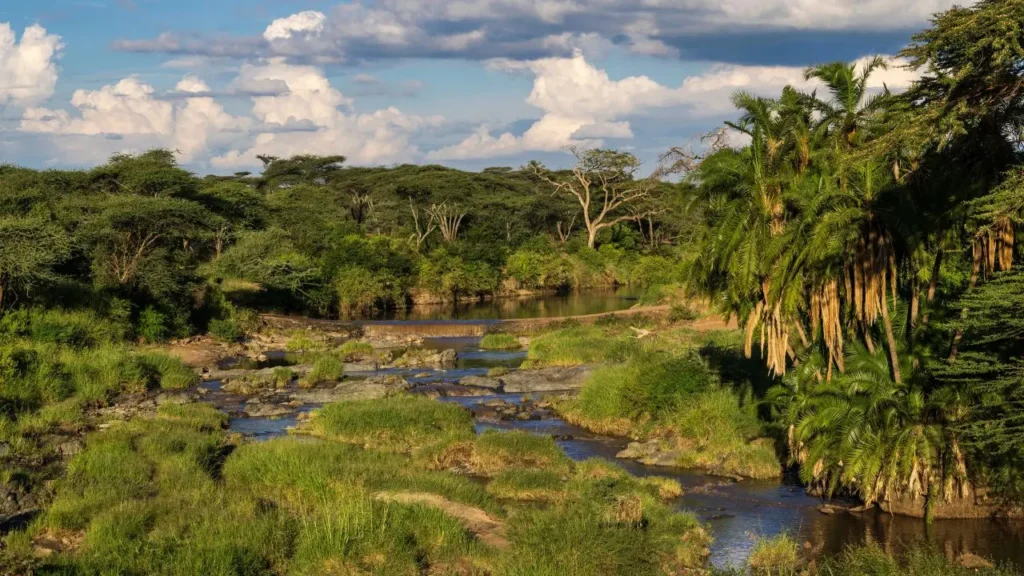
Gorges and Hills
In the northern part of the park, you’ll find rolling hills, valleys, and gorges. These areas offer stunning vistas and unique geological formations. They provide a different perspective on the Serengeti landscape and can be particularly scenic during sunrise or sunset.
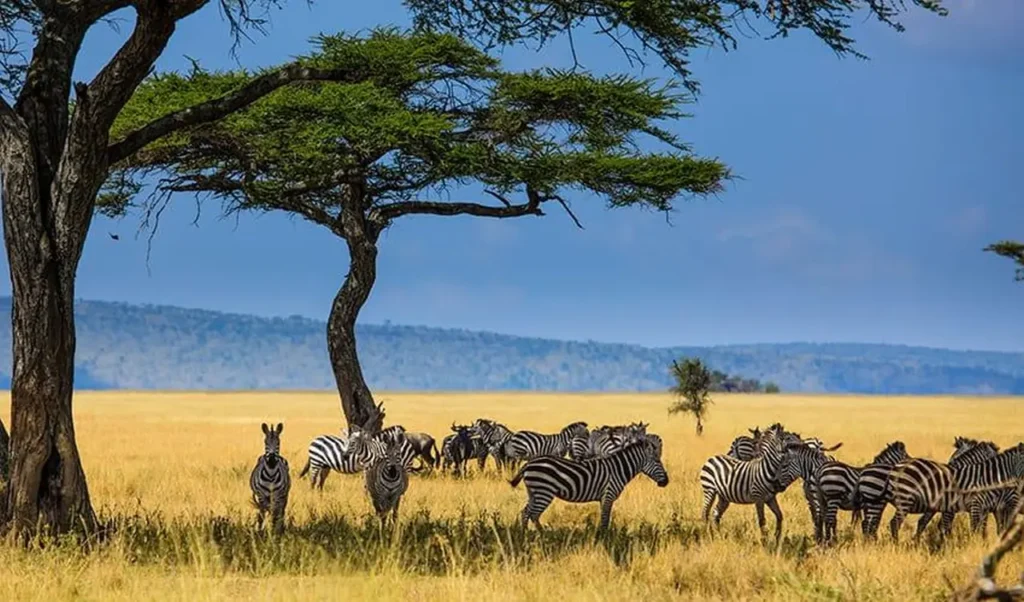
Lakes
Serengeti National Park is home to several lakes, including Lake Ndutu, Lake Victoria (shared with neighboring countries), and seasonal soda lakes like Lake Magadi. These lakes attract a variety of bird species and offer a picturesque setting for wildlife viewing and photography.

These diverse natural landscapes contribute to the incredible beauty and ecological richness of Serengeti National Park. Each area offers a unique experience, and exploring the different habitats provides a deeper appreciation for the park’s biodiversity.
When visiting Serengeti National Park, it’s important to pay attention to several key aspects to ensure a safe and enjoyable experience. Here are some important considerations.
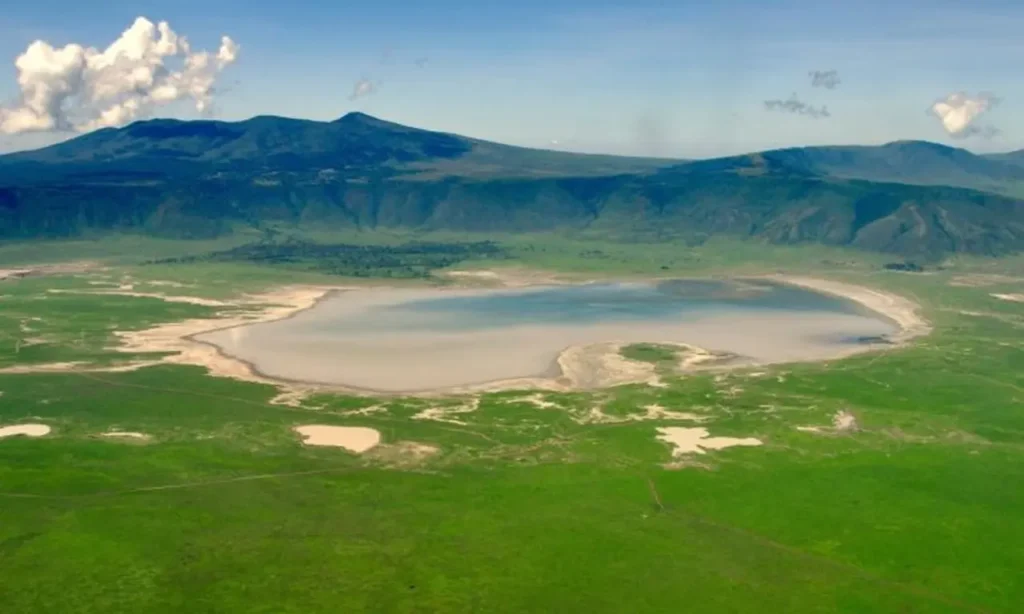
- Safety Precautions: Always follow the instructions and guidelines provided by your safari guide or park authorities. Stay inside the vehicle during game drives unless instructed otherwise. Avoid any sudden or loud movements that could disturb or provoke the wildlife. Respect the animals’ space and maintain a safe distance to ensure your safety and the welfare of the wildlife.
- Wildlife Viewing Etiquette: While observing wildlife, maintain a respectful and responsible approach. Do not feed the animals or leave any litter behind. Keep noise levels to a minimum to avoid startling or distressing the animals. Listen to your guide’s instructions on how to behave around different wildlife species.
- Wildlife Movement and Behavior: Pay attention to the behavior and movement of animals. Your experienced safari guide will help interpret their actions and guide you to the best viewing spots. Understanding the signs of animal behavior can enhance your wildlife encounters and ensure your safety.
- Weather Conditions: Be prepared for varying weather conditions, as the Serengeti experiences distinct seasons. Carry appropriate clothing, including light and breathable attire for the hot days and warmer clothing for the cooler mornings and evenings. It’s also advisable to bring sunscreen, a hat, insect repellent, and drinking water to stay hydrated.
- Tsetse Flies: Some areas of the Serengeti may have tsetse flies, which can give a painful bite. Wear light-colored clothing and use insect repellents to minimize their presence. Avoid wearing dark blue or black colors, as these attract tsetse flies.
- Conservation and Environmental Protection: Serengeti National Park is a protected area, and it’s crucial to respect and preserve its natural environment. Follow the park’s regulations and avoid littering. Respect the flora and fauna, and do not disturb or remove any plants, rocks, or artifacts.
- Cultural Sensitivity: If you have the opportunity to interact with local Maasai communities, show respect for their culture and traditions. Seek permission before taking photographs of individuals, and purchase locally made crafts or souvenirs to support the local economy.
- Photography: The Serengeti offers incredible photography opportunities. Bring a good camera with telephoto and wide-angle lenses to capture the stunning landscapes and wildlife encounters. Ensure you have enough memory cards and batteries to capture the moments.
By paying attention to these considerations, you can have a safe, respectful, and memorable experience in Serengeti National Park.
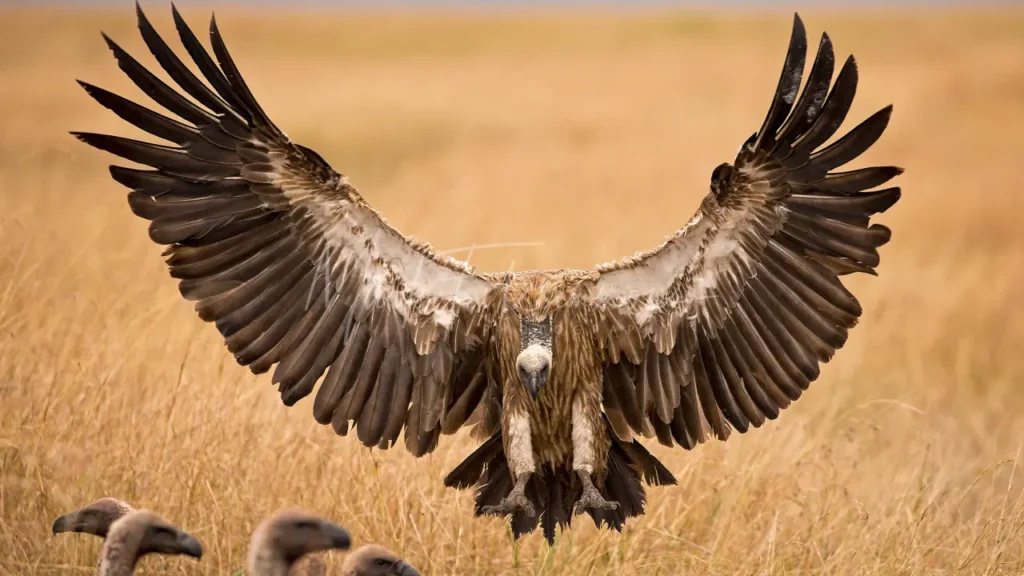
The best time to visit Serengeti National Park depends on the specific experiences you seek and the wildlife events you want to witness. Here are some considerations for different seasons.
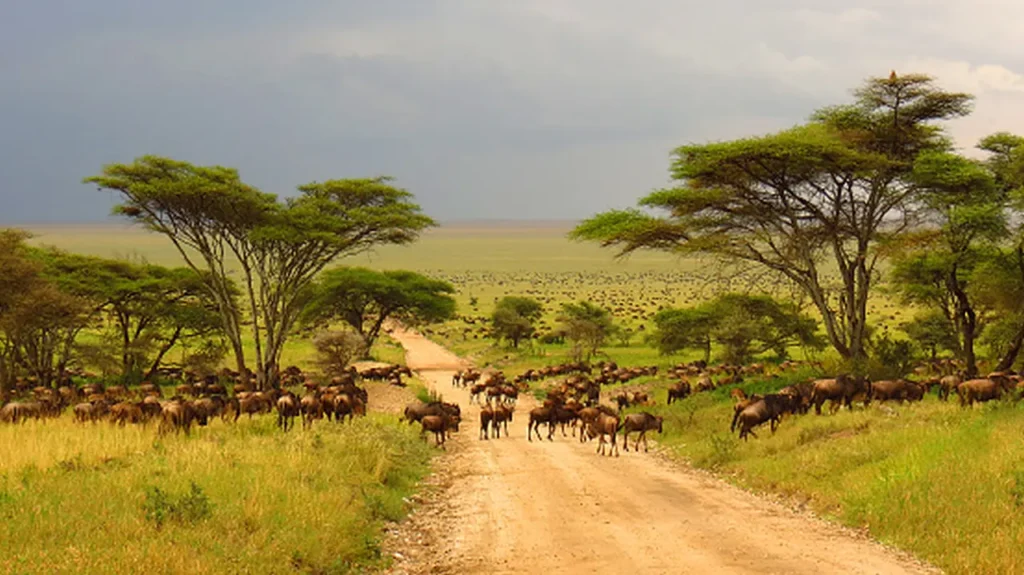
- Dry Season (June to October): This is the peak tourist season and considered the best time for game viewing. The weather is generally dry, with clear skies and cooler temperatures. Wildlife concentrations are higher as animals gather around water sources. The Great Migration is a significant highlight during this period, as millions of wildebeests, zebras, and gazelles cross the Serengeti plains and Grumeti River.
- Wet Season (November to May): The wet season is characterized by short rains from November to December and long rains from March to May. While this period is considered the low season, it has its advantages. The landscape is lush and green, birdlife is abundant, and there are fewer tourists. It’s also the calving season for wildebeests, which attracts predators. However, note that some roads may be impassable due to heavy rains, and wildlife may disperse over a wider area.
- January to February: This period is often considered the best time for birdwatching, as many migratory bird species are present in the park. The weather is generally pleasant, and wildlife sightings can still be rewarding. However, it’s advisable to book accommodations well in advance, as this period coincides with the holiday season and can be busy.
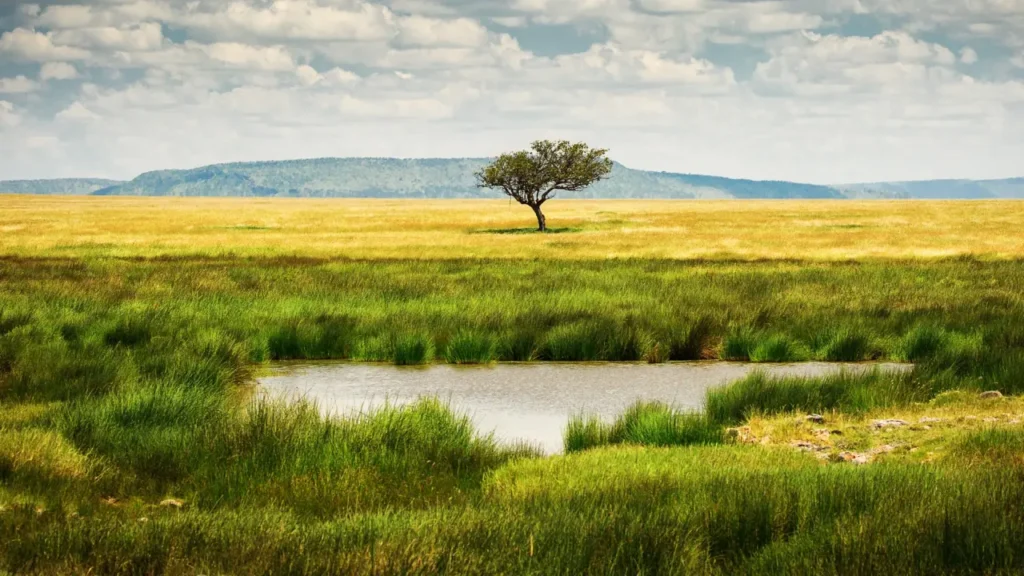
It’s important to note that Serengeti National Park experiences a tropical climate, and weather patterns can vary from year to year. It’s advisable to check the latest weather forecasts and consult with a reputable safari operator or tour guide to plan your visit according to your preferences and the wildlife events you wish to witness.
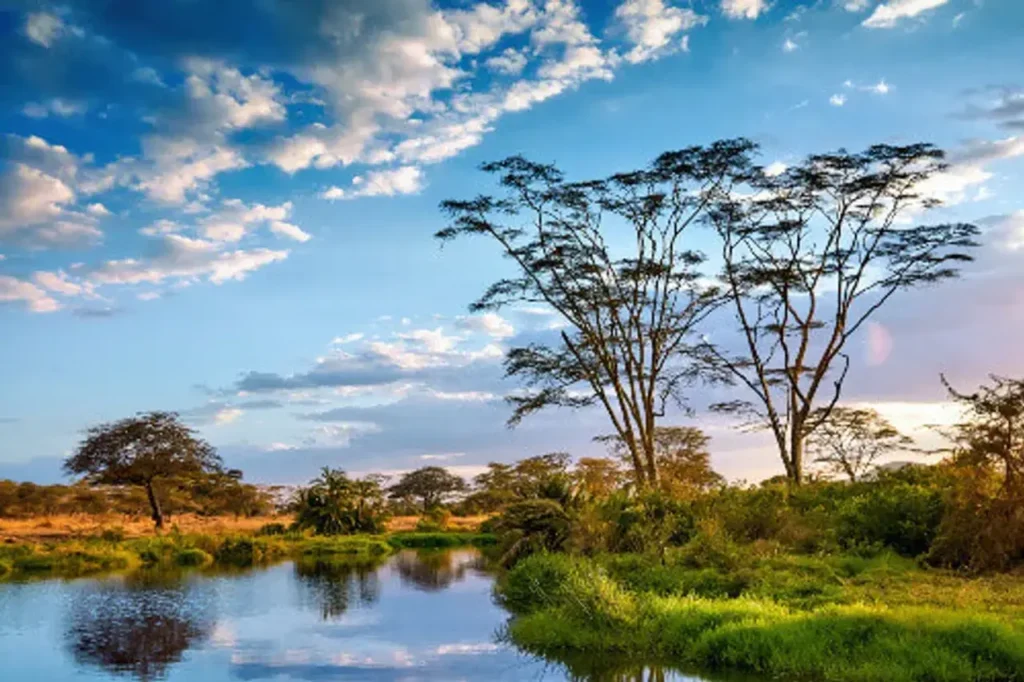
Ultimately, any time of the year offers unique opportunities to experience the beauty and wildlife of Serengeti National Park. Whether you choose the dry season for game viewing or the wet season for its lush landscapes and birdlife, you’re bound to have an incredible safari experience in one of Africa’s most iconic destinations.

